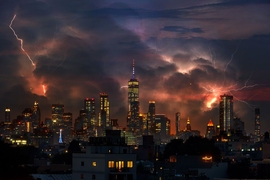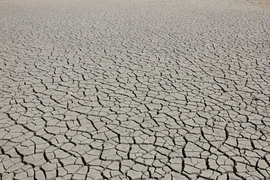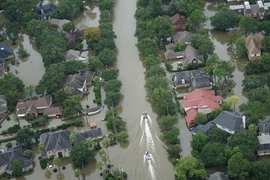Judah Cohen, director of seasonal forecasting at AER (Atmospheric and Environmental Research) and visiting scientist in MIT's Department of Civil and Environmental Engineering, and Ernest Fraenkel, professor of biological engineering at MIT, have won first place in three out of four temperature forecasting categories in the Sub-Seasonal Climate Forecast Rodeo competition, hosted by the National Oceanic and Atmospheric Administration and sponsored by the U.S. Bureau of Reclamation.
The MIT researchers, who were joined by Stanford University PhD students Jessica Hwang and Paulo Orenstein and Microsoft researcher Lester Mackey, beat the operational long-range forecasting model used by the U.S. government.
To be eligible for the competition, the teams were required to submit their climate predictions every two weeks between April 17, 2017 and April 18, 2018. The goal was to create a model that the western United States would be able to rely on weeks in advance to help manage water resources and prepare for wildfires and drought.
The competition required that the models achieve a higher mean skill over all competitive forecasts, and two benchmarks submitted by the U.S. Government, which are unbiased versions of the physics-based U.S. Climate Forecasting System. The models also had to achieve damped persistence (indicating that the data you are contributing is increasing the correlative effect over time).
“The current weather predicting models are only able to make forecasts about seven to 10 days prior to the forecast. By using machine learning techniques like the one we created for this contest, [the new model] is able to help energy companies and cities prepare for severe storms much farther in advance,” says Cohen.
The dynamic team of experts combined historical weather-pattern recognition and machine learning in order to produce real-time predictions of temperature and precipitation anomalies two to six weeks in advance for the western United States.
“We capitalized on the current availability of ample meteorological records and high-performance computing techniques to blend both physics-based or dynamic models and statistical machine learning approaches in order to extend the skillful forecast horizon from days to weeks,” says Cohen.
The combination of machine learning techniques and historical weather-pattern recognition is very powerful because it can help the government maximize water resources and prepare for natural disasters or extreme weather conditions.
“There are certainly plans to continue this project, as we have been talking about extending the model to the entire U.S. We demonstrated with this contest that there is potential with this model to leapfrog the forecasting process. It can help provide more accuracy at lower costs in the subseasonal forecasts," explains Cohen.










